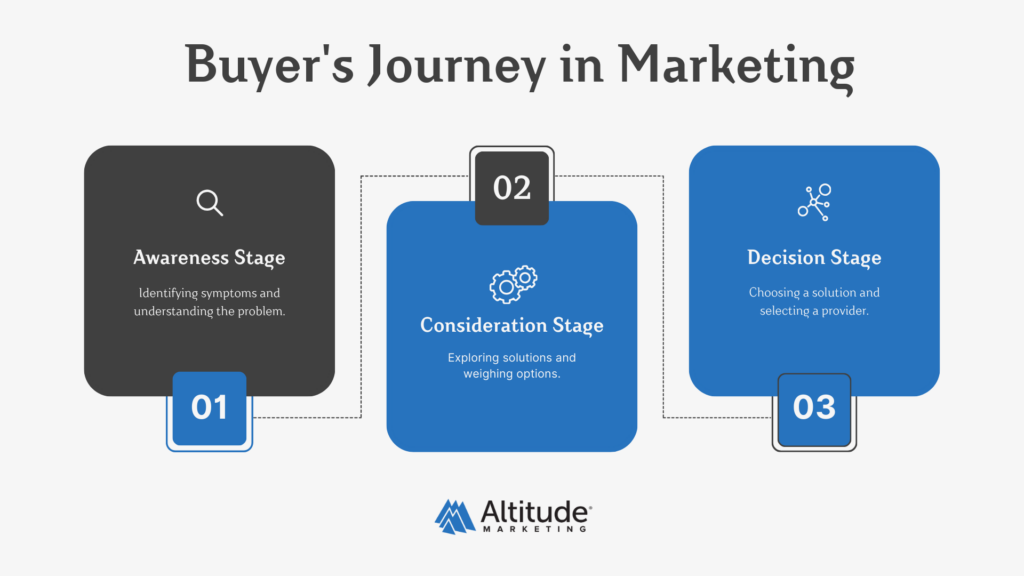Are you tired of inconsistent messaging and missed opportunities? Businesses are constantly searching for innovative ways to engage their audience and stand out in a crowded market.
As B2B companies strive to make meaningful connections with potential clients, the integration of various marketing strategies becomes crucial. Focusing on a seamless integration of tactics ensures that every piece of content resonates with the target demographic.
An integrated campaign aligns messaging, strategy, and goals across platforms to engage audiences more deeply and guide them smoothly through the sales funnel. In this guide, we’ll explore 8 essential steps to build integrated B2B marketing campaigns that deliver measurable, impactful results.

Key Steps to Build Successful B2B Campaign
Crafting an impactful B2B marketing campaign starts with knowing your audience, setting clear goals, and optimizing at each stage. These targeted strategies drive engagement and measurable results.
1. Identify and Segment Your Target Audience
An effective B2B campaign starts with a clear understanding of your audience. Start by analyzing your target audience to identify unique segments based on industry, company size, job roles, or demographics. Segmentation allows you to customize messaging, ensuring each group receives relevant information.
For instance, segmenting by role—like IT managers versus CFOs—helps you address specific pain points.
Build Clear Personas
Developing personas for each segment humanizes your audience and adds depth to your targeting. A persona, such as “Finance Fred” (a CFO focused on cost control and risk management), gives structure to your messaging by highlighting specific goals, challenges, and needs. Personas ensure your content speaks directly to the priorities of each segment.
Map the Buyer Journey
Map the stages of the buyer journey — Awareness, Consideration, Decision — to align content with each phase. For example, IT managers in the Awareness stage could value educational resources, while CFOs in the Decision phase might need ROI case studies.

2. Set Clear, Measurable Campaign Goals
For an integrated B2B marketing campaign to succeed, it’s essential to start with clearly defined, measurable goals that align with your business objectives. These goals act as a roadmap, ensuring each campaign effort is purpose-driven and directly contributes to the bottom line.
- Define Key Objectives
Choose specific KPIs that reflect the core goals of your campaign. Some valuable KPIs for B2B campaigns include:
- Lead Generation: Metrics like Marketing Qualified Leads (MQLs) and Sales Qualified Leads (SQLs) to assess lead quality.
- Brand Visibility: Engagement rates, impressions, and share of voice to measure awareness.
- Conversions: Conversion rates, customer acquisition costs (CAC), and ROI to gauge effectiveness.
- Prioritize Metrics
To avoid overwhelming data, focus on metrics that align with your target audience and main objectives.
- For lead-focused campaigns, prioritize MQLs and SQLs.
- For visibility goals, track engagement and impressions.
Aligning goals and metrics ensures each step of your campaign strategy contributes to measurable, business-driven results.
3. Develop Cohesive Messaging Across All Channels
To create a strong, integrated B2B campaign, your messaging needs to be consistent across all channels. Start by defining your main message—the key point that speaks to your audience’s biggest challenge and how your solution helps solve it.
This message should act as the foundation, while each platform (email, social media, website, ads) adapts it slightly to fit the medium and audience segment. Use the same keywords, tone, and brand voice across channels to create familiarity and trust.
Reinforce this message with consistent visuals, like logos, color schemes, and imagery, so that prospects recognize your brand instantly, wherever they engage with it. This level of cohesion will make your campaign feel seamless, memorable, and highly professional, ultimately driving stronger engagement and results.
4. Select and Integrate High-Impact Marketing Channels
To reach B2B audiences effectively, focus on marketing channels with a track record of success. Here’s a streamlined approach:
- Channel Prioritization
Prioritize channels like LinkedIn, email marketing, Account-Based Marketing (ABM), and content marketing to reach decision-makers and foster engagement.
Choose platforms where your audience is most active, ensuring higher impact and engagement.
- Multi-Channel Synergy
Align messaging across all selected channels. For example, keep LinkedIn ads, email campaigns, and content marketing pieces consistent in tone, visuals, and core messaging.
This consistency amplifies reach, improves recognition, and strengthens your brand’s positioning.
- Event Marketing Integration
Integrate webinars, trade shows, or industry events into your strategy. These provide direct engagement opportunities and reinforce your digital efforts.
Follow up digital campaigns with event-based touchpoints to deepen relationships and nurture leads. By strategically using high-impact channels, you create a seamless experience that drives engagement and conversions.
5. Connect with Audience Via Educative Engagement
Creating high-value content is essential for reaching and engaging B2B audiences effectively. Here’s how to structure impactful content:
- Content Variety
Design a mix of educational resources to meet diverse audience needs:
- Blog posts for quick insights and industry updates.
- Whitepapers for in-depth solutions to complex challenges.
- Case studies to demonstrate how your solutions work in real-world scenarios.
Tailor the content to answer specific audience questions, positioning your brand as a knowledgeable resource.
- SEO Integration
Use strategic keywords to enhance visibility in search results.Place keywords naturally within titles, headings, and throughout the content to attract organic traffic from relevant searches.
By producing varied, keyword-optimized content, your program will more effectively reach and engage prospects, guiding them toward solutions while strengthening your brand authority.
6. Nurture Leads with Personalized Campaigns
Let’s talk about building strong connections with leads through automation and personalization. Here’s how to set up a process that moves leads forward efficiently:
- Create Dynamic Workflows
Think of workflows as guided paths that change based on each lead’s actions. If a lead downloads a whitepaper, send them a follow-up email with related content.
Use marketing automation to set up these workflows so they adapt based on actions (like content downloads or email opens) and fit each journey stage (awareness, consideration, or decision).
- Personalize Every Touchpoint
Leads engage more when the content feels relevant. Use behavior-based triggers—like page visits or clicks—to send information that matches their interests.
Plan sequences to highlight different product benefits, success stories, or useful insights over time, so each interaction builds rapport naturally.
- Measure and Adjust
Tracking engagement metrics (open rates, click-throughs, lead progression) will show you what’s working. Regularly tweak workflows based on this data to increase effectiveness and conversions.
When automation meets personalization, lead nurturing becomes a strategic process that guides each prospect toward the finish line with tailored, timely outreach.
7. Monitor Campaign Performance
For a B2B campaign that drives results, real-time monitoring and ongoing optimization are essential. Here’s how to approach it effectively:
- Set Up Comprehensive Tracking
Use analytics tools to track all channels (email, social, paid ads) in real-time. Focus on key metrics like click-through rates, conversions, engagement, and cost per acquisition to understand each element’s performance.
- Make Data-Driven Adjustments
Act quickly on insights from your data. If email engagement is low, consider adjusting the subject line or content. For paid ads with high impressions but low conversions, refine targeting or visuals to better match your audience.
- Conduct Strategic A/B Testing
Continuously test high-impact elements like messaging, visuals, and CTAs. A/B testing offers concrete insights, showing what resonates most with your audience. Use these findings to fine-tune your approach as the campaign unfolds.
By actively monitoring and adjusting, you maximize ROI and keep your campaigns aligned with audience needs, ensuring sustained impact.
8. Conduct Post-Campaign Analysis and Implement Learnings
Once a campaign concludes, a focused analysis helps identify what worked best. Start by reviewing each campaign component, particularly lead nurturing and contact strategies, to see which actions drove the highest engagement and conversions.
Analyze specific content types, messaging, and timing of interactions that boosted pipeline growth. Share findings with stakeholders in a concise, data-driven report, emphasizing key tactics that had the strongest impact.
This clarity helps align the team on strategies to replicate in future campaigns. To maximize ongoing improvements, focus on:
- Refining lead nurturing tactics based on successful engagement touchpoints.
- Optimizing content and messaging to enhance audience response.
- Implementing data-backed adjustments in future campaigns for better conversion rates.
Each post-campaign analysis makes your B2B marketing more effective and strategically aligned with proven results.
Steps | Key Actions |
Identify Your Audience | Analyze customer data to create segments such as industry, company size, and job roles. |
Build Clear Personas | Develop personas like “Finance Fred” focusing on goals and challenges relevant to each segment. |
Map the Buyer Journey | Align your content with stages like Awareness, Consideration, and Decision. |
Set Campaign Goals | Establish KPIs such as lead generation, brand visibility, and conversions. |
Develop Cohesive Messaging | Use the same language, tone, and visuals on platforms like email, social media, and your website. |
Select Marketing Channels | Focus on high-impact channels such as LinkedIn and email marketing. Ensure all messaging is aligned. |
Engage with Educative Content | Produce a mix of blogs, whitepapers, and case studies, all optimized with relevant keywords for SEO. |
Nurture Leads and Monitor Performance | Set up dynamic workflows and personalize content based on user behavior. Track metrics to adjust strategies as needed. |
Boost Your B2B Marketing Impact
Effective B2B marketing campaigns start with a deep understanding of your audience. By segmenting your target market, setting clear goals, and maintaining consistent messages across all channels, you establish a strong foundation.
Utilizing high-impact channels and producing educational content keeps your audience engaged and nurtures leads effectively. Regularly monitoring and adjusting your strategies based on performance data ensures ongoing effectiveness.
This focused approach drives measurable business results, strengthens your brand’s position in the industry, and builds lasting relationships with a steady stream of qualified leads.
FAQs
What are B2B marketing campaigns?
B2B marketing campaigns are promotional efforts aimed at businesses rather than individual consumers. These campaigns focus on building relationships, educating potential clients, and highlighting how a product or service can address specific business needs.
What is an example of B2B marketing?
An example of B2B marketing is a software company targeting other businesses with a content-rich email campaign promoting their new cloud-based platform for streamlined data management. The campaign includes whitepapers, case studies, and demos tailored to business clients.
What are the 7 P's of B2B marketing?
The 7 P’s of B2B marketing are Product, Price, Place, Promotion, People, Process, and Physical Evidence. These elements guide companies in delivering value, setting competitive prices, choosing distribution channels, promoting effectively, staffing for client needs, ensuring efficient processes, and building tangible credibility.
What is a B2B marketing strategy?
A B2B marketing strategy is a plan that targets other businesses, outlining how to reach, engage, and convert them through channels like email, LinkedIn, webinars, and trade shows. The strategy focuses on addressing specific pain points, offering value propositions, and fostering long-term relationships with clients.
Is Amazon an example of B2B?
Yes, Amazon has a B2B component, Amazon Business, which allows businesses to buy bulk supplies, manage procurement, and access business-only pricing and products.



